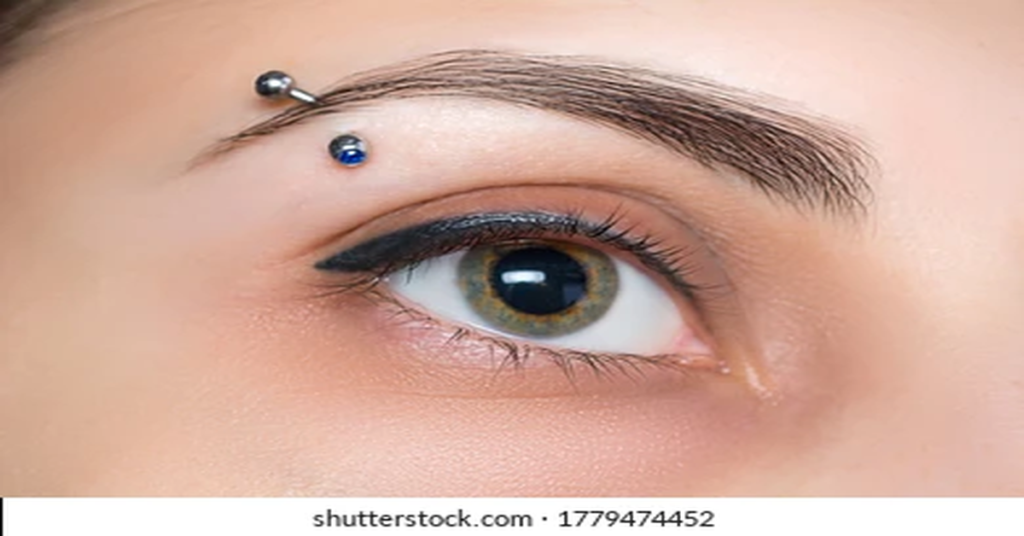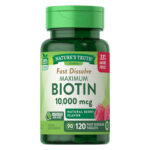Eyebrow piercings are one of the most popular forms of facial piercings. Stylish, versatile, and expressive, this piercing has remained a fashion statement for decades. Whether you’re considering getting one or simply curious about the trend, this comprehensive guide will walk you through everything you need to know about eyebrow piercings. From its history and types to aftercare tips and potential risks, you’ll find all the information to make an informed decision.
The History of Eyebrow Piercing
Eyebrow piercings, like many forms of body modification, have cultural roots and modern interpretations. While they didn’t historically exist in many ancient cultures, facial piercings, in general, have been used as symbols of status, beauty, and identity. Eyebrow piercings as we know them today emerged prominently in the late 20th century, particularly in the punk and alternative subcultures of the 1980s and 1990s.
Today, eyebrow piercings are embraced by people of all walks of life, representing individuality, fashion, and self-expression.
Types of Eyebrow Piercings
Eyebrow piercings can be done in various styles and placements, allowing for a unique look. Here are the most common types:
1. Vertical Eyebrow Piercing
- The most traditional type of eyebrow piercing.
- Positioned vertically along the natural curve of the eyebrow.
- Typically placed near the outer third of the eyebrow.
2. Horizontal Eyebrow Piercing
- Runs parallel to the eyebrow, just above or below it.
- Offers a more unconventional and bold appearance.
3. Anti-Eyebrow Piercing (Teardrop)
- Located beneath the outer corner of the eye, where the cheek and lower eyebrow meet.
- Gives a unique and dramatic effect.
4. Spiral Eyebrow Piercing
- Involves multiple punctures to accommodate a spiral-shaped piece of jewelry.
- Best suited for those seeking a bold and edgy look.
5. Double Eyebrow Piercing
- Consists of two piercings placed close together, either vertically or horizontally.
- Allows for creative jewelry combinations.
The Procedure: What to Expect
1. Preparation
Before getting an eyebrow piercing, choose a reputable and licensed piercing studio. Research reviews, ask for recommendations, and ensure the studio follows strict hygiene practices.
2. The Piercing Process
- Consultation: The piercer will discuss the placement, jewelry options, and aftercare instructions.
- Sterilization: The area around your eyebrow will be cleaned and sterilized.
- Marking: The piercer will mark the spot to ensure correct placement.
- Piercing: Using a hollow needle, the piercer will create the opening and insert the jewelry. The process is quick and typically lasts only a few seconds.
3. Pain Level
Eyebrow piercings are generally considered to be on the lower to moderate end of the pain scale. The discomfort is brief and similar to a sharp pinch.
Aftercare for Eyebrow Piercing
Proper aftercare is essential to ensure healing and prevent complications. Follow these steps:
1. Cleaning the Piercing
- Use a saline solution or a piercing-specific cleaning solution.
- Clean the area twice daily using a cotton swab or sterile gauze.
- Avoid using alcohol, hydrogen peroxide, or harsh soaps.
2. Avoid Touching
- Keep your hands away from the piercing to minimize the risk of infection.
- Do not twist or move the jewelry unnecessarily.
3. Protect the Area
- Avoid applying makeup, lotions, or creams near the piercing.
- Be cautious when washing your face or styling your hair.
- Protect the area from trauma, such as accidental bumps or snagging.
4. Healing Time
- The average healing time for an eyebrow piercing is 6-8 weeks.
- Healing may vary based on individual factors, such as skin type and aftercare routine.
Jewelry Options for Eyebrow Piercings
Eyebrow piercings offer a variety of jewelry styles to suit personal preferences. Common options include:
1. Curved Barbells
- The most popular choice for eyebrow piercings.
- Provides a comfortable fit and reduces pressure on the piercing.
2. Hoops (Captive Bead Rings)
- Offer a bold and stylish look.
- Ideal for healed piercings to avoid irritation.
3. Straight Barbells
- Less common but can be used for horizontal eyebrow piercings.
4. Spiral Jewelry
- Perfect for spiral or multiple-piercing designs.
- Adds an edgy and artistic flair.
Potential Risks and Complications
While eyebrow piercings are generally safe, it’s essential to be aware of potential risks:
1. Infection
- Signs: Redness, swelling, pain, or discharge.
- Prevention: Follow aftercare instructions diligently and avoid touching the piercing.
2. Rejection
- Sometimes the body may push the jewelry out, resulting in rejection.
- Choose high-quality jewelry and avoid excessive pressure on the piercing.
3. Allergic Reactions
- Some individuals may be allergic to certain metals, such as nickel.
- Opt for hypoallergenic jewelry, like titanium or surgical steel.
4. Scarring
- Improper aftercare or removal of the piercing can lead to scarring.
- Ensure proper healing before changing or removing the jewelry.
Tips for a Successful Eyebrow Piercing Experience
- Choose a Skilled Piercer: Research and select an experienced professional to ensure proper placement and technique.
- Communicate Your Preferences: Discuss placement, jewelry, and any concerns with your piercer beforehand.
- Be Patient: Allow the piercing to heal fully before changing jewelry or experimenting with styles.
- Invest in Quality Jewelry: High-quality materials reduce the risk of irritation, infection, and rejection.
Conclusion
Eyebrow piercings are a bold and stylish way to express individuality and enhance your look. With proper preparation, aftercare, and attention to quality jewelry, this piercing can be a safe and rewarding choice. Whether you’re new to piercings or adding to your collection, the eyebrow piercing offers endless possibilities for creativity and self-expression.
Frequently Asked Questions (FAQs)
1. Does an eyebrow piercing hurt?
The pain is usually minimal, described as a quick pinch. Discomfort varies based on individual pain tolerance.
2. How long does it take for an eyebrow piercing to heal?
The average healing time is 6-8 weeks, but full healing can take up to 3 months for some people.
3. Can I remove my eyebrow piercing for a job interview or formal event?
While you can remove the jewelry temporarily, doing so during the healing process is not recommended. Consider using a clear retainer instead.
4. What should I do if my eyebrow piercing gets infected?
Clean the area with saline solution, avoid touching it, and consult a professional piercer or healthcare provider if symptoms persist.
5. Can I sleep on the side with my eyebrow piercing?
It’s best to avoid sleeping on the pierced side to prevent irritation, pressure, and prolonged healing.
6. How do I know if my eyebrow piercing is rejecting?
Signs of rejection include the jewelry moving closer to the surface, increased redness, and thinning skin around the piercing. Consult your piercer for advice if you suspect rejection.







